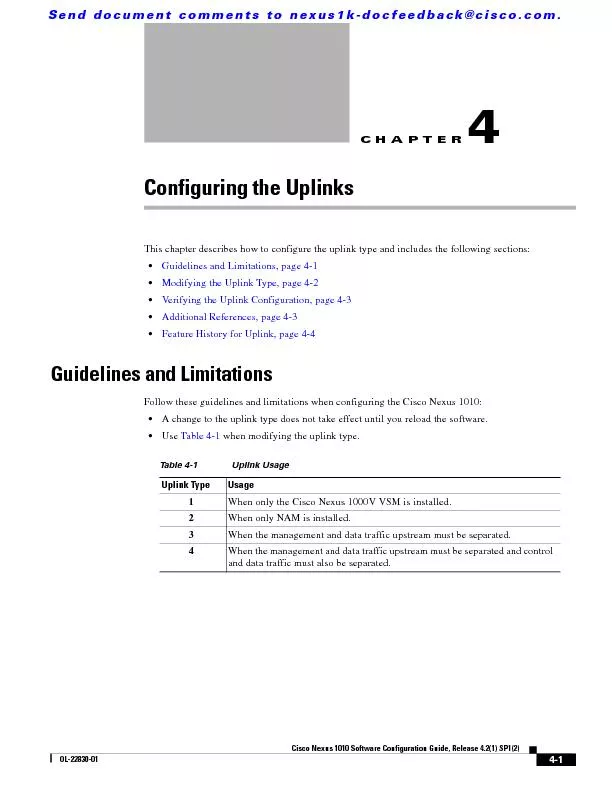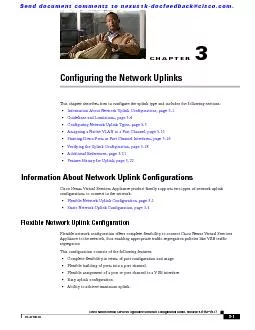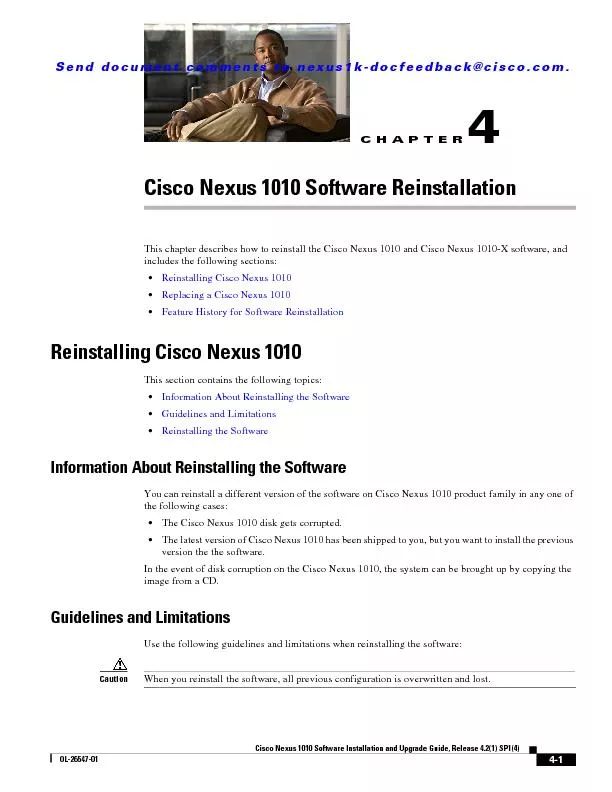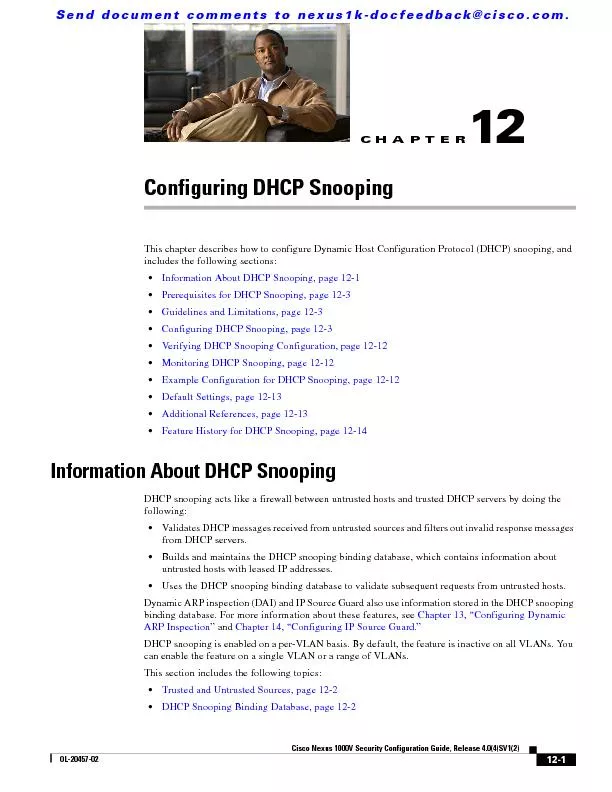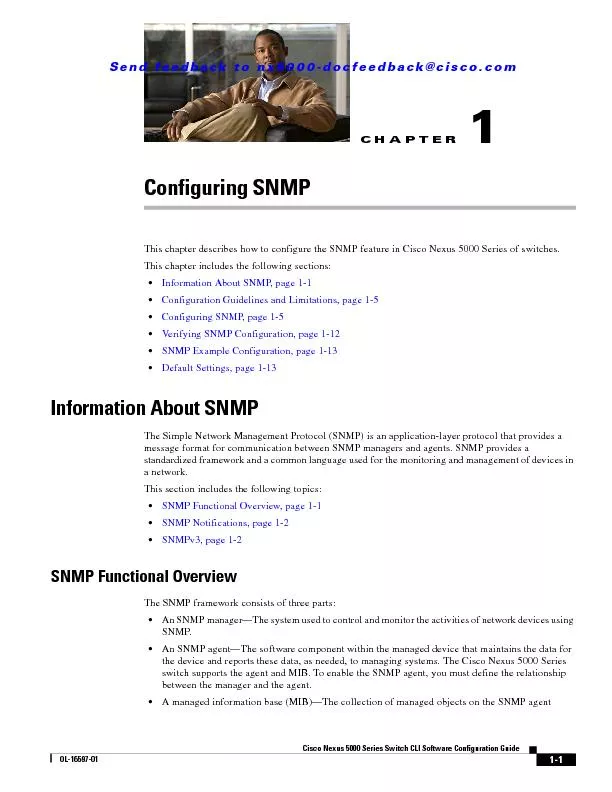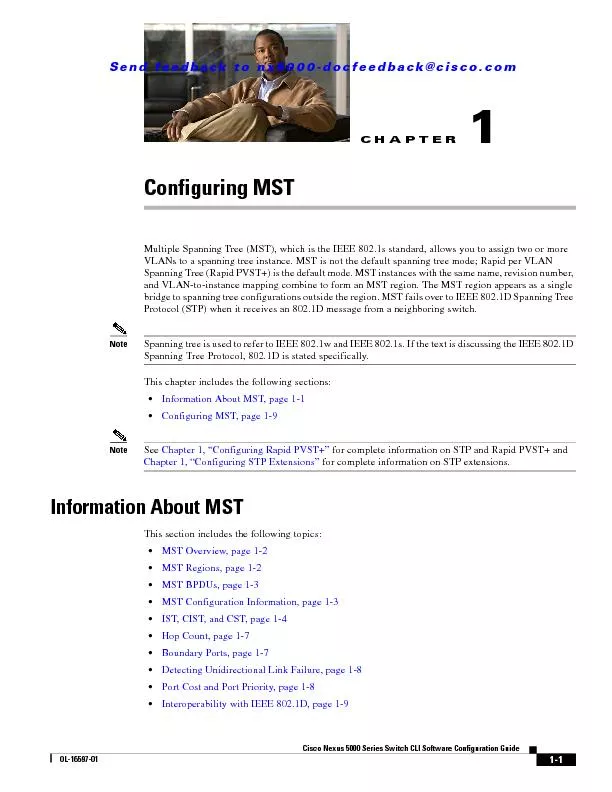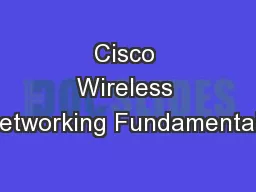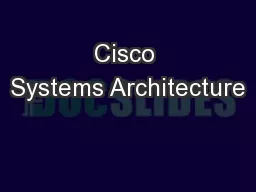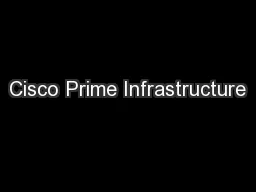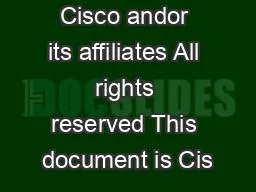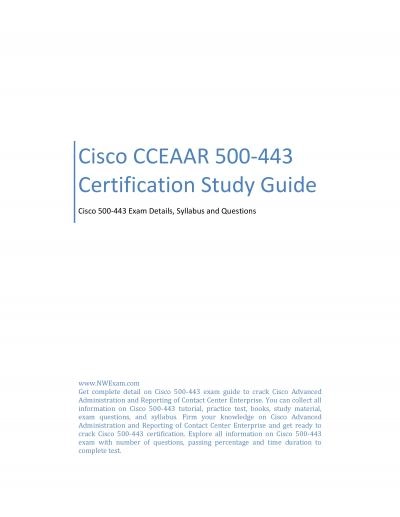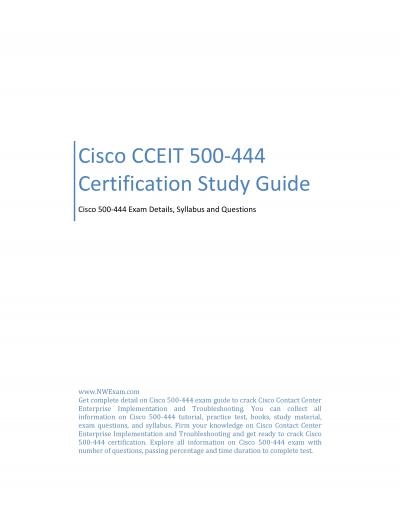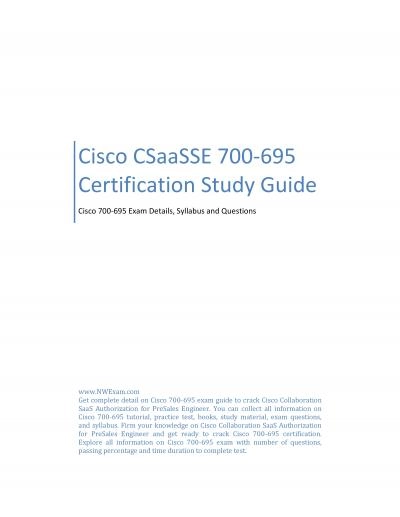PDF-CHAPTERSend document comments to nexus1k-docfeedback@cisco.com. ...
Author : sherrill-nordquist | Published Date : 2016-08-20
Cisco Nexus 1010 Software Configuration Guide Release 421 SP12OL2283001 This chapter describes how to configure the uplink type and includes the following sectionsGuidelines
Presentation Embed Code
Download Presentation
Download Presentation The PPT/PDF document "CHAPTERSend document comments to nexus1k..." is the property of its rightful owner. Permission is granted to download and print the materials on this website for personal, non-commercial use only, and to display it on your personal computer provided you do not modify the materials and that you retain all copyright notices contained in the materials. By downloading content from our website, you accept the terms of this agreement.
CHAPTERSend document comments to nexus1k-docfeedback@cisco.com. ...: Transcript
Download Rules Of Document
"CHAPTERSend document comments to nexus1k-docfeedback@cisco.com.
..."The content belongs to its owner. You may download and print it for personal use, without modification, and keep all copyright notices. By downloading, you agree to these terms.
Related Documents

